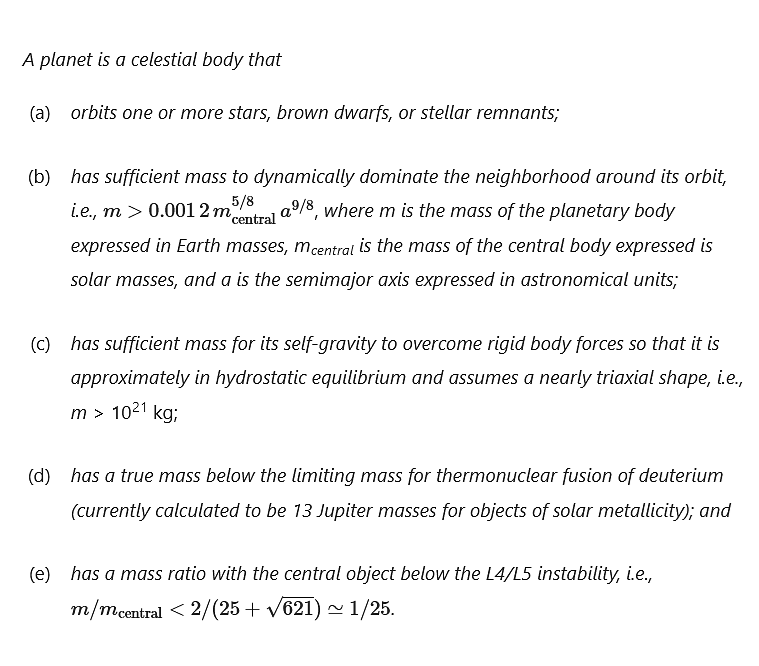Snippet from paper about the more precise definition of a planet -
A planet is a celestial body that
(a) orbits one or more stars, brown dwarfs, or stellar remnants, and
(b) has sufficient mass to dynamically dominate the neighborhood around its orbit, i.e., m > 0.0012 (mcentral)^(5/8) a^(9/8), where m is the mass of the planetary body expressed in Earth masses, mcentral is the mass of the central body expressed is solar masses, and a is the semimajor axis expressed in astronomical units, and
(c) has sufficient mass for its self-gravity to overcome rigid body forces so that it is approximately in hydrostatic equilibrium and assumes a nearly triaxial shape, i.e., m > 10^21 kg, and
(d) has a true mass below the limiting mass for thermonuclear fusion of deuterium (currently calculated to be 13 Jupiter masses for objects of solar metallicity), and
(e) has a mass ratio with the central object below the L4/L5 instability, i.e., m/mcentral < 2/(25 + √621) ≃ 1/25.
A satellite is a celestial body that orbits a planet.
